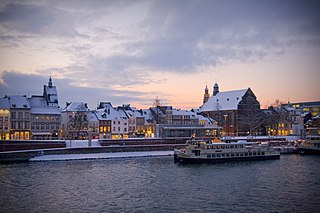
Maastricht is a city and a municipality in the southeastern Netherlands. It is the capital and largest city of the province of Limburg. Maastricht is located on both sides of the Meuse, at the point where the Jeker joins it. Mount Saint Peter (Sint-Pietersberg) is largely situated within the city's municipal borders. Maastricht is adjacent to the border with Belgium and is part of the Meuse-Rhine Euroregion, an international metropolis with a population of about 3.9 million, which includes the nearby German and Belgian cities of Aachen, Liège, and Hasselt.
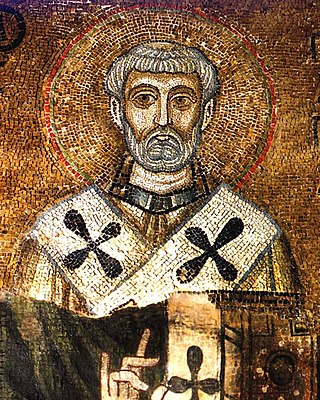
Clement of Rome, also known as Pope Clement I, was a bishop of Rome in the late first century AD. He is considered to be the first of the Apostolic Fathers of the Church, and a leading member of the Church in Rome in the late 1st century.

Huy is a city and municipality of Wallonia located in the province of Liège, Belgium. Huy lies along the river Meuse, at the mouth of the small river Hoyoux. It is in the sillon industriel, the former industrial backbone of Wallonia, home to the Walloon population.

Amandus, commonly called Saint Amand, was a bishop of Tongeren-Maastricht and one of the catholic missionaries of Flanders. He is venerated as a saint, particularly in France and Belgium.
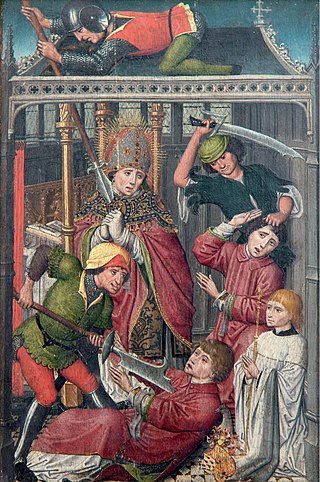
Lambert of Maastricht, commonly referred to as Saint Lambert, was the bishop of Maastricht-Liège (Tongeren) from about 670 until his death. Lambert denounced Pepin's liaison with his mistress or bigamous wife Alpaida, the mother of Charles Martel. The bishop was murdered during the political turmoil that developed when various families fought for influence as the Merovingian dynasty gave way to the Carolingians. He is considered a martyr for his defence of marriage. His feast day is September 17.

The Prince-Bishopric of Liège or Principality of Liège was an ecclesiastical principality of the Holy Roman Empire that was situated for the most part in present-day Belgium. It was an Imperial Estate, so the bishop of Liège, as its prince, had a seat and a vote in the Imperial Diet. The Prince-Bishopric of Liège should not be confused with the Diocese of Liège, which was larger and over which the prince-bishop exercised only the usual responsibilities of a bishop.

Lucifer of Cagliari was a bishop of Cagliari in Sardinia known for his passionate opposition to Arianism. He is sometimes venerated as a Saint in Sardinia, though his status remains controversial.
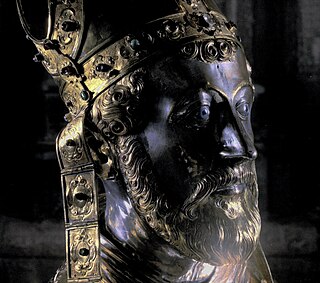
Saint Servatius was bishop of Tongeren. Servatius is patron saint of the city of Maastricht and the towns of Schijndel and Grimbergen. He is one of the Ice Saints. His feast day is May 13.
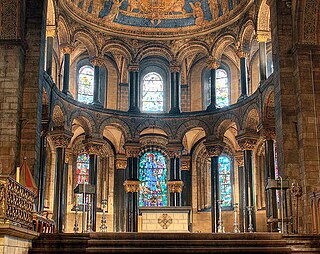
Mosan art is a regional style of art from the valley of the Meuse in present-day Belgium, the Netherlands, and Germany. Although in a broader sense the term applies to art from this region from all periods, it generally refers to Romanesque art, with Mosan Romanesque architecture, stone carving, metalwork, enamelling and manuscript illumination reaching a high level of development during the 11th, 12th and 13th centuries.
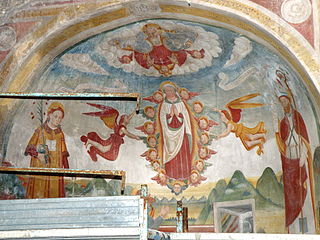
Abundius, venerated in the Catholic Church as Saint Abundius, was a bishop of Como, Northern Italy.

Paphnutius of Thebes, also known as Paphnutius the Confessor, was a dubiously historical early Christian figure, said to be a disciple of Anthony the Great and a bishop of a city in the Upper Thebaid in the early fourth century. He is accounted by some as a prominent member of the First Council of Nicaea which took place in 325. Neither the name of his see nor the precise date of his death are known.

The Crosiers, formally known as the Canons Regular of the Order of the Holy Cross, abbreviated OSC, is a Catholic religious order of canons regular of Pontifical Right for men. It is one of the Church's oldest religious orders, and membership consists of priests and brothers who live together according to the Rule of St. Augustine.
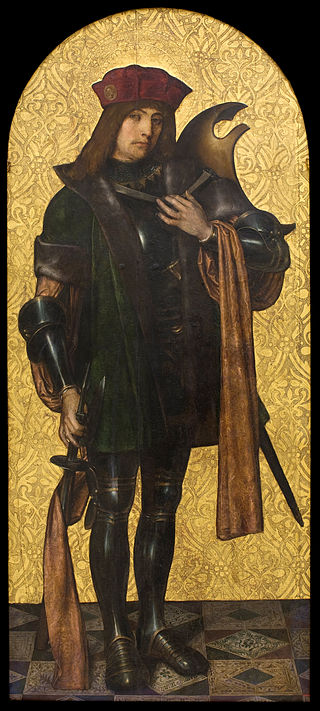
Candidus was a commander of the Theban Legion. The Theban Legion was composed of Christians from Upper Egypt. He is venerated as a Christian saint and martyr.
Remaclus was a Benedictine missionary bishop who is venerated as a saint.

Saint Gaugericus, in French Saint Géry was a bishop of Cambrai, France.
Domitian was a Roman emperor of the Flavian dynasty who reigned 81–96.
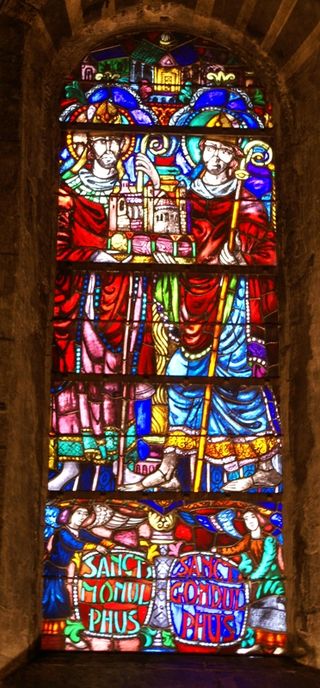
Monulph was a sixth-century bishop of Tongeren and Maastricht, and is revered as a Roman Catholic saint.
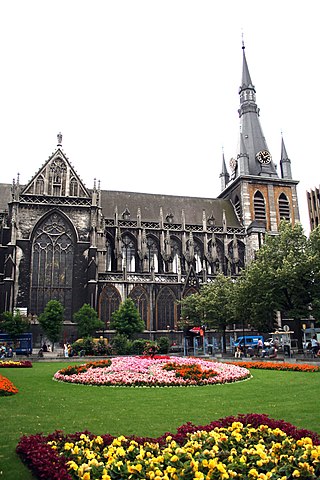
The Diocese of Liège is a Latin Church ecclesiastical territory or diocese of the Catholic Church in Belgium. The diocese was erected in the 4th century and presently covers the same territory as Belgium's Liège Province, but it was historically much larger. Currently, the diocese is a suffragan in the ecclesiastical province of the Archdiocese of Mechelen-Brussels. Its cathedra is found within St. Paul's Cathedral in the episcopal see of Liège.

Domitian of Carantania or Domitian of Carinthia, also known as Domislav and Tuitianus, was a Slavic nobleman in the principality of Carantania during the reign of Charlemagne. He is regarded as the legendary founder of the Millstatt Abbey church and was venerated as a saint.
The Roman Catholic Diocese of Maastricht was a Roman Catholic jurisdiction in parts of present Netherlands and Belgium, which has been nominally revived as a Latin titular bishopric.

















